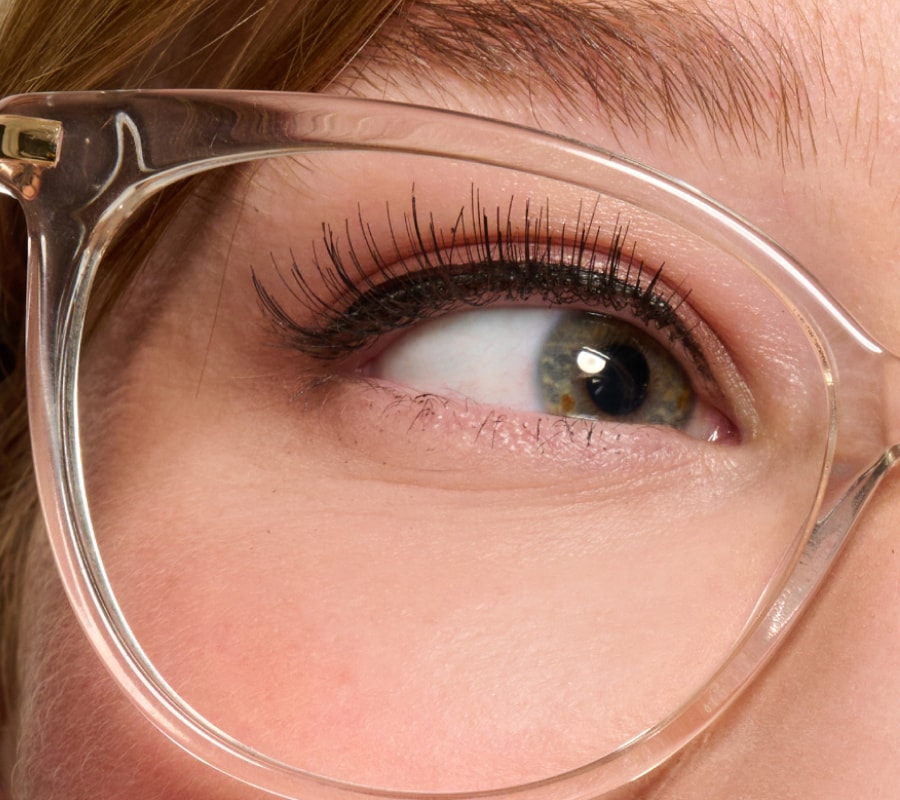Astigmatism is a vision problem. It happens when the cornea or lens is uneven. This shape issue affects how light enters the eye. As a result, you see things distorted. This guide explores what it is, how it affects light perception, especially at night, along with the best ways to manage it.
What is Astigmatism?
Astigmatism is a prevalent eye condition that affects vision clarity. It occurs when the cornea or lens is not perfectly round, causing light to focus unevenly within the eye.
People with astigmatism often see blurry. They may also find it hard to tell shapes apart, like letters and numbers. Additional symptoms could include headaches, eye strain, and problems seeing at night.
Eye care professionals use different tests to diagnose astigmatism. This includes a thorough eye exam. It checks visual acuity and the cornea’s curvature. These tests find out how bad the astigmatism is. They also help decide on the right glasses or contact lenses for correction.
What Causes Astigmatism?
Doctors are unable to explain why the shape of the cornea or lens differs from person to person, but there are several ways to acquire astigmatism:
- Infants born prematurely are more likely to have astigmatism than those born closer to their due date.
- Others may develop it later in life. Surgery, illness, or corneal scarring caused by trauma can also induce irregular astigmatism.
- Keratoconus is another cause of irregular astigmatism in which the cornea thins and changes form to a more conical shape over time.
How Astigmatism Affects Light Perception
Astigmatism is a common optical condition that alters light perception. When the cornea or lens is not perfectly shaped, light scatters instead of focusing properly, causing individuals with astigmatism to perceive light differently in various situations.
What Do Astigmatism Lights at Night vs Normal Vision Look Like?
People who have astigmatism have the same eyesight regardless of the time of day. However, blurry vision may be more evident at night because of the contrast between light and dark. As a response to less light, your pupils dilate to let more light into the eye. Due to this, people with astigmatism lights at night see additional glare and streaks. As a result, most people report having trouble driving at night but not during the day. This is because some may overlook the problem during the day since it’s easier to overcome during daylight.
Common Light Distortions
Those with astigmatism frequently see various light distortions, including halos, starbursts, and glare.
- Halos – Rings appearing around lights.
- Starbursts – Radiating lines from lights resembling a star.
- Glare – Intense brightness impairing vision.
These distortions are more pronounced at night, complicating tasks such as driving. Understanding these effects can assist in selecting suitable glasses or contacts to enhance vision.
Does Astigmatism Cause Light Sensitivity?
Astigmatism can definitely cause light sensitivity to varying degrees. The difference is between how much blur an eye sees in different directions.
If it was equally blurry in all directions, then you’d have no astigmatism and would likely not be sensitive to light. On the other hand, if it were different in at least two directions then you likely have astigmatism.
In addition to astigmatism, light sensitivity is also known to be caused by many forms of visual impairment, such as cataracts or keratoconus.
Therefore, it’s difficult to determine whether your light sensitivity is caused by astigmatism without consulting an eye professional. If you have a high degree of light sensitivity, you should make a visit to your optometrist to see if astigmatism is a contributing factor.
Can Astigmatism Be Corrected?
Astigmatism can hinder nighttime vision, but there are strategies to alleviate its impact. Selecting appropriate correction methods can significantly enhance night vision. Some people may choose to pursue LASIK laser eye surgery as a way to cure their astigmatism. However, there are simpler alternatives such as wearing corrective eyewear.
Eyeglasses and contact lenses are widely used solutions for astigmatism. Astigmatism lights glasses work by including a cylindrical lens that adjusts for the irregular curves in your cornea or lens to reduce visual distortion. Anti-reflective coatings on glasses can reduce glare from lights, which is particularly beneficial for night driving. These coatings minimize reflections and halos, facilitating safer night driving. Individuals who have severe astigmatism may benefit from glasses rather than contacts.
Tips for Safe Night Driving with Astigmatism
Night driving can be difficult, particularly for people with astigmatism. This condition often results in glare and halos around lights. Here are practical tips for safer night driving with astigmatism.
- Prepare your vehicle – Ensure your vehicle is ready for nighttime travel. Clean mirrors and windshields regularly to eliminate dirt or smudges that contribute to glare. Consider using anti-glare screens or films on mirrors to reduce reflections from other cars. These simple measures can greatly enhance visibility at night.
- Personal habits – Your driving habits also impact night vision safety. Take regular breaks during extended drives to rest your eyes, alleviating eye strain. Avoid looking directly at bright lights, such as oncoming headlights, to prevent temporary blindness. Instead, focus on the road using peripheral vision to stay aware of your surroundings.
Make night driving easier and safer. Prep your vehicle and change a few habits. Small modifications can lead to safer journeys.
Solutions for Astigmatism
Eyebuydirect offers a broad selection of eyeglasses and lenses tailored for those with astigmatism. Whether seeking classic or contemporary frames, Eyebuydirect provides stylish options that are also functional. Explore classic glasses styles for a mix of style and clarity. Ordering is straightforward, allowing you to easily input your prescription at checkout. Find your ideal pair using our extensive collection.
If you’re considering getting your astigmatism corrected, the right pair of prescription eyeglasses is a must. By visiting your eye doctor, you can find if astigmatism lights glasses are right for your vision problems. At Eyebuydirect, you can find awesome eyeglasses or prescription sunglasses for just a fraction of the price.







